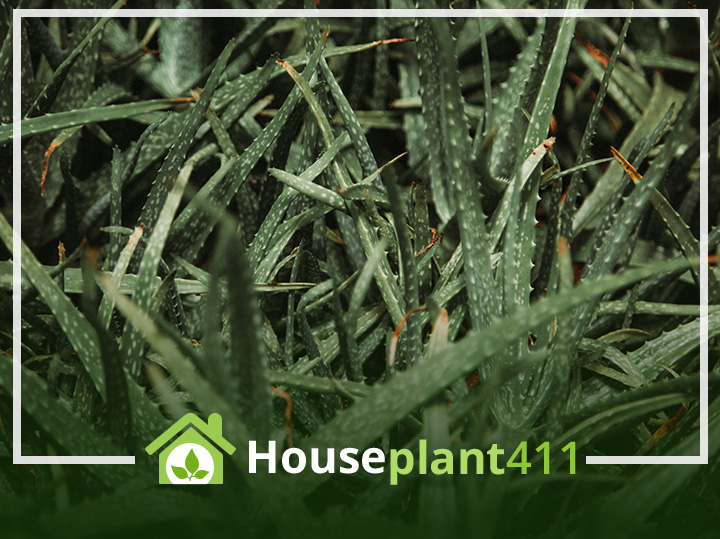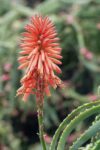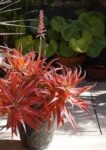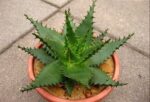About
An aloe plant grows well both indoors, in a very bright spot, as a houseplant, and outdoors in warms climates. There are over 500 species of flowering succulent plants in the aloe genus. Surprisingly, aloe plants belong to the Asphodelaceae (Liliaceae) family and are relatives of the flowering lily plant. There are over 500 species of the succulent aloe plant that is thought to have originated in the hot and dry regions of Madagascar, the Arabian Peninsula, Southern Europe, Eastern and Southern Africa, and the Canary Islands. Today aloe plants can be found growing in dry, warm areas throughout the world. The most popular indoor variety is the Aloe Vera or “true aloe” plant (Aloe barbadensis miller. Historically, an aloe vera plant has been used as a medicine for hundreds of years in such places as Egypt, Greece, China, Japan, and India. Today, the sap is often used to soothe minor burns and irritations which is how the plant got its nicknames, “Medicine plant” or “Wonder Plant”. The gelatinous sap found in the leaves is also used in women’s cosmetics. A small aloe vera plant is a perfect for a sunny spot in your kitchen, quickly available in case you burn yourself while cooking.
Aloe Vera Plant Description
An aloe vera plant has little or no stems to speak of. The stemless rosettes of long, fleshy, green-gray leaves have sharp, serrated edges, so be very careful when handling the plant. The leaves, which can be as tall as 2ft, have several layers. It is the inner layer that contains the medicinal gel. Because of the cactus like nature and the sharp teeth on the leaves, an aloe vera plant is sometimes erroneously referred to as a “Desert Cactus.” Although an indoor aloe vera plant rarely blooms; when grown outside, it produces long spikes with yellow, white, or red tubular flowers at the top. When small, an aloe vera plant can be used as a table plant and, as it matures, a floor plant
Aloe Vera Flowers Sunset Aloe Plant Snake Aloe Plant
Quick Care Tips for an Aloe Vera Plant
Provide very bright light and some morning sun
During the winter allow the soil to totally dry out
Aloe plants prefer nighttime temperatures that are 10° cooler than daytime temperatures
Easily propagated from stem cuttings or plant division
Conclusion
Although the sap is frequently used medicinally, aloe vera plants are considered poisonous if eaten and should be kept away from pets and children. Read more about common houseplants that are toxic to dogs, cats, and children in my book Don’t Feed Me to Your Cat: A Guide to Poisonous Houseplants
Plant Care
Light
How much sun an aloe vera plant needs indoors is different than aloe vera light requirements outdoors. Indoors an aloe vera likes bright, indirect light and only morning sun. Avoid direct afternoon sun or the leaves may become discolored. An outdoor aloe vera plant can adapt to direct sun.
Water
How to water an aloe vera plant: Water well and then allow the soil to thoroughly dry out before watering again. It may be 2-3 weeks before an aloe vera plants needs to be watered again. During the winter, an aloe vera plant needs even less water. An aloe vera plant can be saved from severe under-watering, but rarely survives being over-watered.
Fertilizer
A fertilizer for an Aloe Vera plant is different fertilizer than most houseplants prefer. Feed monthly with a 10/40/10 plant food diluted to 1/2 the recommended strength.
Temperature
These plants likes dry, warm temperatures between 65°-85°F (18°-29° C). Aloe Vera plants do not do well in temperatures below 40°F (4.5°C)
Humidity
Native to the deserts and need very little humidity.
Pests
There are very few plant pests that bother an Aloe Vera.
Diseases
Root-rot, caused by over watering, is the main problem.
Soil
Grows in almost any type of soil, but a quick draining well-aerated soil with some sand in it is best. A commercial cactus potting soil works well.
Pot Size
Keep in a small pot with drip holes in the bottom; this allows the soil to quickly dry- out and prevents root-rot.
Pruning
Aloe Vera plants rarely need to be pruned.
Propagation
Propagate using offsets or suckers.
Clean Air Plant
An Aloe Vera plant helps remove benzene, which is released from commercial cleaning products and paint, from the air.
Poisonous Plant Info
Although the sap of an Aloe Vera plant is highly recommended for treating burns, other parts of the plant are poisonous. This plant has a #1 toxicity level.
FAQ
Aloe Vera Plants get mushy leaves when they are over-watered. Allow the soil to thoroughly dry out or the roots rot and the plant dies.
Planting an Aloe Vera in a heavy pot that is deeper rather than wider prevents the plant from falling over.
Aloe Vera plants are propagated by small plants called offsets or suckers that grow around the base of the main plant. Carefully remove these offsets, plant them in a small pot of loose soil, water well, and place the container in a warm, dry, sunny location. Aloe Vera plants root very easily.
I think your Aloe Vera plant is getting leaf damage because the air around the plant is too cold. These are very sensitive to low temperatures so never allow Aloe vera leaves to touch a cold window, keep them away from air conditioning and cold drafts.




